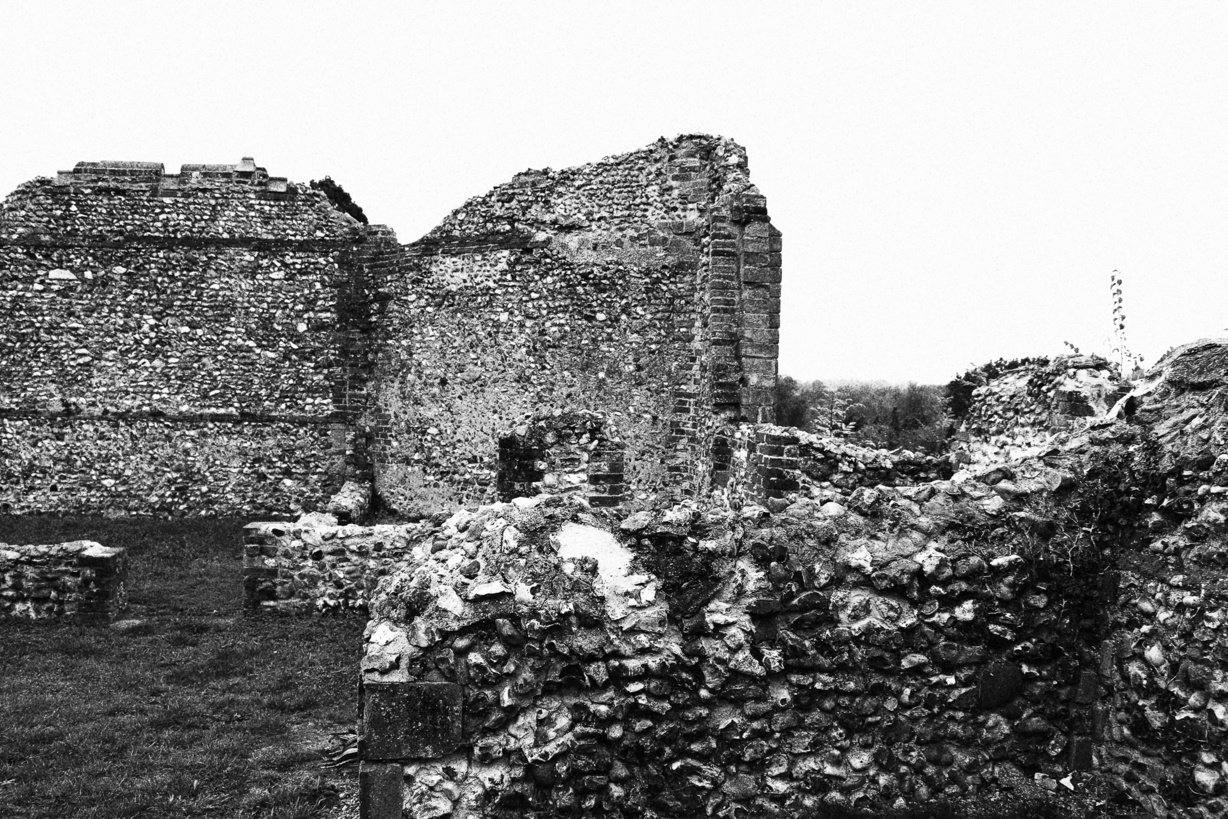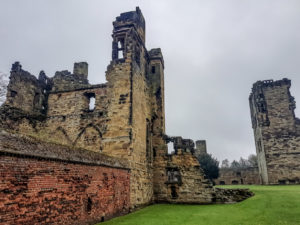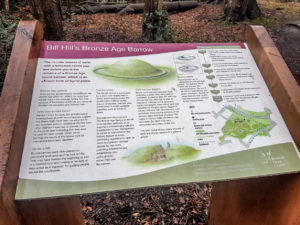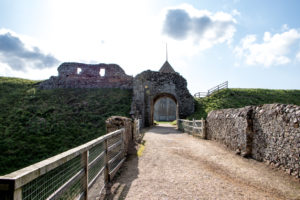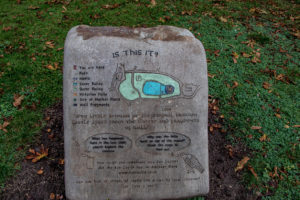 Eye Castle is a motte and bailey castle, built during the reign of William I by William Malet, who died fighting Hereward the Wake in 1071. The Malet family also controlled the surrounding Honour of Eye, a significant collection of estates centering on the castle, and the park of Eye. The castle motte is 160 feet in diameter and 40 feet high, with the bailey approximately 400 feet by 250 feet wide. The castle is unusual in being only of two castles mentioned in the Domesday book on 1086 as a source of income for their owners, due to the presence of a market within the castle, bailey, from which the owner drew revenue; the castle’s market competed with the Bishop of Norwich’s market at Hoxne.
Eye Castle is a motte and bailey castle, built during the reign of William I by William Malet, who died fighting Hereward the Wake in 1071. The Malet family also controlled the surrounding Honour of Eye, a significant collection of estates centering on the castle, and the park of Eye. The castle motte is 160 feet in diameter and 40 feet high, with the bailey approximately 400 feet by 250 feet wide. The castle is unusual in being only of two castles mentioned in the Domesday book on 1086 as a source of income for their owners, due to the presence of a market within the castle, bailey, from which the owner drew revenue; the castle’s market competed with the Bishop of Norwich’s market at Hoxne.
William Malet’s son, Robert, was exiled and after his death at the battle of Tinchebrai in 1106, Eye was confiscated by Henry I and became a royal castle for a period. Henry gave Eye to his favored nephew, Stephen of Blois in 1113. Stephen succeeded to the English throne in 1135 and he gave the honor of Eye first to one of his lieutenants, William of Ypres, and then later to Hervey Brito, his son-in-law. At some point during the 1140s, Stephen then transferred the lands to his second son, William. William was still young at the time, and it appears that until he came of age these lands were initially managed by Stephen’s trusted Royal Steward, William Martel. Meanwhile, the civil war known as the Anarchy had broken out between Stephen and Empress Matilda between 1138 and 1154; much of the fighting occurred in East Anglia, where the powerful Bigod family, headed by Hugh Bigod, attempted to expand their autonomy and influence. Eye Castle did not play a major role in the war as, despite some skirmishing occurring in the region, most of the campaigning was conducted to the west.
After coming to power in 1154, Henry II attempted to re-establish royal influence across the region. Partially as a result of the civil war, Hugh Bigod had come to dominate East Anglia by the late 12th century, holding the title of the Earl of Norfolk and owning the four major castles in the region, Framlingham, Bungay, Walton, and Thetford. As part of this effort, Henry confiscated the Bigod castles, from Hugh in 1157. Despite having made earlier promises to protect him, Henry still saw Stephen’s son, William, as a potential claimant to the throne, and the king confiscated the castle of Eye as well at the same time. William died in 1159, allowing Henry to formally acquire and thereby legitimize his control of Eye Castle.
Hugh then joined the revolt by Henry’s sons in 1173. Eye was attacked by Hugh Bigod in 1173. Although the attack failed, the castle had to be rebuilt. Two square towers were built on the north side of the inner bailey in the late 12th century, possibly contemporaneously with Framlingham. The castle was protected using the castle-guard system, under which local lands were granted to minor lords in exchange for the contribution of knights and soldiers for the defense of the castle.
The castle was attacked and sacked in 1265 during the Second Barons’ War; it was subsequently largely abandoned.



